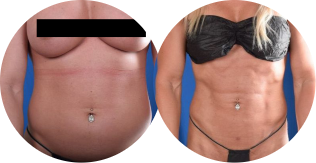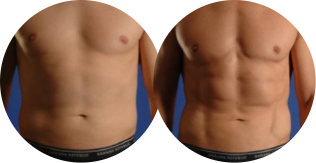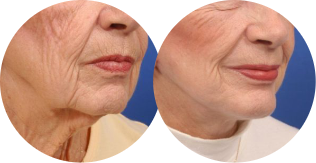Fat Transfer
Offered at our convenient location in Denver
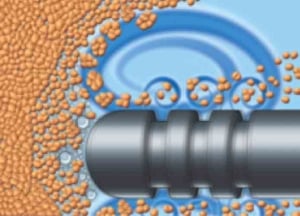
A fat transfer, also known as fat grafting, is a procedure in which patients can use their own natural fat tissue to enhance features of the face, breast, or body. (1) This revolutionary procedure gives patients the opportunity to shape their bodies without using primitive methods or by introducing a foreign substance–like implants–into the body.
Dr. John A. Millard is a leading pioneer in the development of tools and techniques that have not only improved the success of fat transplantation procedures but have also significantly improved the safety of the procedure as well. He performs fat grafting in the more commonly grafted places, such as the female breast (Fat Transfer Breast Augmentation), and the male and female buttocks (Brazilian Butt Lift), but he is also adept at transferring fat to accentuate almost any muscle in the body; Dr. Millard can transfer fat into the muscles of the back, deltoids, triceps, biceps, abdomen muscles, quadriceps, and calves.
If you are interested in sculpting your body in a way that appears natural, contact Millard Plastic Surgery so that Dr. Millard can meet with you for a personal consultation. You can call (303) 792-5665 to reach our Englewood office near Denver today. If you would like to learn more, you can visit our blog where we expand upon different topics relating to cosmetic surgery.
Contents
About Fat Transfers
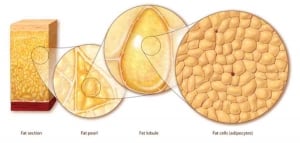
Fat grafting can incorporate many different techniques, but Dr. Millard often begins the procedure with lipoaspiration or liposuction and ends the procedure by placing the patient’s fat into another part of the body. Among the techniques that Dr. Millard uses are vibration amplification of sound energy at resonance (VASER) and ultrasound-image-guided-fat-transplantation (UIGFT). The combination of these techniques allows for more precise fat extraction and placement.
Wells Johnson HVP System
When it comes to fat, less handling and exposure of the tissue can make for better surgical outcomes. The Wells Johnson HVP system is one of the few systems in use that provides a sterile, closed, low-pressure system during the harvesting and placement of the fat. These closed, in-line systems can serve to maximize fat survival. Part of this technology includes real-time filtration or the removal of unwanted substances. This removes much of the fractured fat cells, blood, and other substances that can impact the survival of the fat.
UIGFT
Dr. Millard employs UIGFT during fat transfers as it avoids blood vessels, provides a more even placement of fat, and lessens the risk of overgrafting. Using ultrasound imaging technology, Dr. Millard is able to better visualize the areas that are receiving the fat, making for more precise and defined results. UIGFT can also help Dr. Millard place larger amounts of fat in any given area.
Benefits of Fat Transfer
With a fat transfer treatment at Millard Plastic Surgery, patients can enjoy the benefits of an enhanced figure, more defined muscles, and reduced wrinkles. One of the biggest benefits of fat transfer is that this technique incorporates only natural components of the patient’s own body–this lessens and even eliminates some of the risks that we normally associate with silicone or saline implant-based augmentation procedures. Because a patient’s own fat tissue is used, results can also look and feel more natural.
“By sculpting patients’ physique using their own adipose-derived tissue, we essentially change the anatomy of the patients so their results will naturally age and evolve along with the rest of the tissue in their body,” says Dr. Millard.
Dr. Millard is proud to be at the leading edge of development in this area; he offers his patients the most up-to-date and advanced methods of body contouring.
Candidates
Fat transfers are great for people who are looking to define areas of the body or add natural-looking volume. When evaluating candidates for fat transfers, Dr. Millard often looks for these traits:
- Generally good health
- At or near ideal weight
- Non-smoking or able to quit before the procedure
- Sufficient fat deposits
- Realistic expectations
- Healthy lifestyle
Personal Consultation
Dr. Millard is passionate about improving patient results and surgical techniques. His extensive experience with fat transfers is apparent in every step of the procedure, including the initial personal consultation. During a personal consultation at Millard Plastic Surgery, Dr. Millard is attentive to patients’ concerns and goals. He will help you understand how the different fat transfer techniques work, and how they would apply to your specific situation. It is important that patients feel informed and confident about their procedures, and Dr. Millard will ensure that during a personal consultation.
You can schedule yours today by calling our Englewood location at (303) 792-5665 or filling out our contact form.
Preparation
The medical team at Millard Plastic Surgery will make sure that you are prepared for your fat transfer procedure every step of the way. Firstly, we recommend that patients get proper nutrition before their procedure, as this will help the body during the healing process. (1) Dr. Millard will provide you with in-depth instructions about how to get all the nutrition your body will need. Some surgical preparation recommendations include:
- Avoid certain medications that thin the blood
- Stop smoking, if applicable, weeks before the procedure
- Drink plenty of water
- Arrange for somebody to drive you home
- Arrange for time off work
Procedure
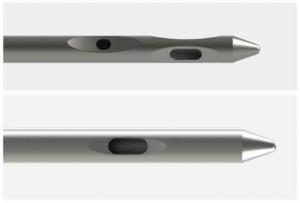
Fat is a delicate structure, and how it is harvested requires great care. Regardless of the technology, one thing that most surgeons agree on is that harvesting at a low and consistent pressure can help maximize the survival of the harvested fat. Thus, your fat will be harvested at a low and consistent pressure with the aforementioned VASER system. Dr. Millard will prepare the fat for extraction with the ultrasound-assisted emulsification of the fat globules, via the processes of LipoSelection and Acoustic Streaming. Both of these processes separate the fat from their surrounding structures while minimizing the trauma to both the fat and the surrounding structures.
The VASER system, by way of its Acoustic Streaming, makes the fat globules a more efficient size for transplant. Dr. Millard has further improved upon this emulsification process by using the V5-VASER 5-Ring Probe that was designed for the VASER. The VASER System aspirates fat tissue at low and consistent pressures with the VentX Cannula System, a kind of vented suction device. Dr. Millard also uses a beveled cannula system, which further decreases potential trauma to fat tissue.
During the procedure, Dr. Millard will slowly place the fat into the new area in very small increments.
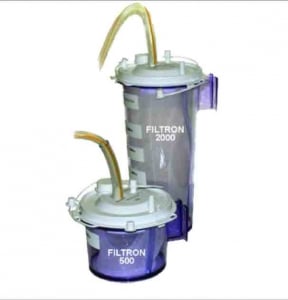
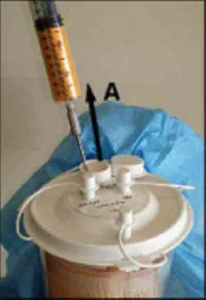
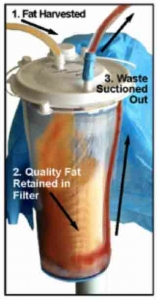
Recovery
Your recovery will depend on the areas that Dr. Millard treats with the fat transfer. Generally, we will recommend that you do not sit directly or put prolonged pressure on the treated areas for around 4 weeks. (1) You will need to take at least 1-2 weeks off of work to focus on resting. Swelling and bruising in the treated area is normal, and will most likely resolve after a few weeks. Dr. Millard will have you schedule regular follow-up appointments so that he can monitor the healing progress of your treated areas.
Results
After the initial fat transfer, the body is capable of retaining up to 90% of the transferred volume. (2) The retention percentage is higher if trauma is minimal and the tissues receive proper nutrition and oxygen before the procedure. (1) However, the volume of transplanted fat that remains in the body long-term will vary from patient to patient.
Sometimes, a very small volume of the fat is immediately retained, or another slightly larger volume is immediately absorbed. (2) Other volumes of fat tissue may be absorbed slowly, alerting the younger fat cells to begin growing to replace the fat cells that the body is losing.
Dr. Millard will provide you with a volume retention estimation before your procedure. This percentage is affected by the body part that is receiving the fat, the degree of skin tightness, and the patient’s age and sex, among many other variables. Oftentimes, Dr. Millard will give an estimation of around 50-70% volume retention. These numbers are based on many of the aforementioned variables and his extensive experience with this kind of procedure.
A fat transfer can have many different aesthetic results, depending on the areas you are seeking to address. It can result in the following:
- Enhanced figure
- Filled-in wrinkles
- Improved buttocks shape
- Reconstructed breasts
Cost of Fat Transfer in Denver
The cost of your fat transfer procedure will be unique to you. Many factors can impact the cost of a fat transfer, such as the amount of fat that is being transferred and the areas that we transfer the fat into. In order to obtain a cost estimate that is relevant to your situation, you should schedule a personal consultation at our Englewood office, conveniently located on Inverness Drive West. At Millard Plastic Surgery, we offer financing through Patient Fi and CareCredit. To learn more about fat transfers and the associated costs, call us at (303) 792-5665 or inquire through our contact form.
FAQ
Is a fat transfer permanent?
A certain percentage of fat that we transfer during fat grafting will most likely be absorbed by the body. However, the fat cells that the body successfully retains will permanently remain in that area. It is important to keep in mind that the size of fat cells can change over time if a patient gains or loses weight, and this can impact the visibility of the results.
What body parts can be augmented with a fat transfer?
Many body parts are eligible for enhancement with a fat transfer. Common areas include breasts, certain muscles, and the buttocks. Fat transfers can be used to sculpt and define tissue or fill in wrinkles.
References
- Shauly O, Gould DJ, Ghavami A. Fat Grafting: Basic Science, Techniques, and Patient Management. Plastic and Reconstructive Surgery – Global Open. 2022;10(3):e3987. doi:https://doi.org/10.1097/gox.0000000000003987
- Shih L, Davis MJ, Winocour SJ. The Science of Fat Grafting. Seminars in Plastic Surgery. 2020;34(01):005-010. doi:https://doi.org/10.1055/s-0039-3402073
If you’re interested in learning more, feel free to schedule a consultation today.
